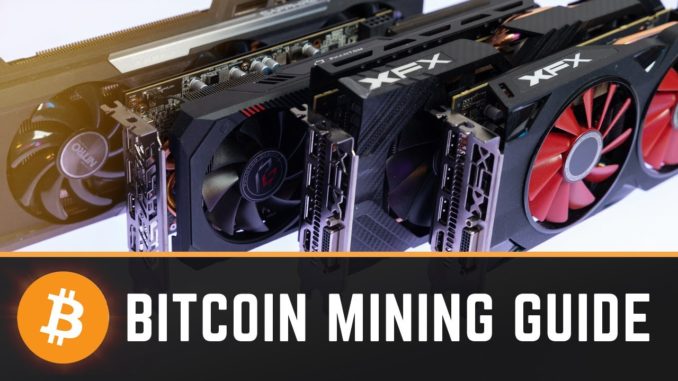Crypto arbitrage is a type of trading strategy where investors capitalize on slight price discrepancies of a digital asset across multiple markets or exchanges. In its simplest form, crypto arbitrage trading is the process of buying a digital asset on one exchange and selling it (just about) simultaneously on another where the price is higher.
Doing so means making profits through a process that involves little or no risks. The other great thing about this strategy is you don’t have to be a professional investor with an expensive set-up in order to begin arbitrage trading.
What is arbitrage trading?
Arbitrage has been a mainstay of traditional financial markets long before the emergence of the crypto market. And yet, there seems to be more hype surrounding the potential of arbitrage opportunities in the crypto scene.
This is most likely because the crypto market is renowned for being highly volatile compared to other financial markets. This means crypto asset prices tend to deviate significantly over a certain time period. Because crypto assets are traded globally across hundreds of exchanges 24/7, there are far more opportunities for arbitrage traders to find profitable price discrepancies.
All a trader would need to do is spot a difference in the pricing of a digital asset across two or more exchanges and execute a series of transactions to take advantage of the difference.
For example, let’s assume the price of bitcoin is $60,000 on the Coinbase cryptocurrency exchange and $60,200 on Kraken. In this scenario, crypto arbitrageurs might spot this disparity and buy bitcoin on Coinbase and sell it on Kraken to pocket the $200 price difference. This is a typical example of a crypto arbitrage trade.
Why are crypto exchange prices different?
Centralized exchanges
The first thing you need to be know is the pricing of assets on centralized exchanges depends on the most recent bid-ask matched order on the exchange order book. In other words, the most recent price at which a trader buys or sells a digital asset on an exchange is considered the real-time price of that asset on the exchange.
For instance, if the order to buy bitcoin for $60,000 is the most recently matched order on an exchange, this price becomes the latest price of bitcoin on the platform. The next matched order after this will also determine the next price of the digital asset. Therefore, price discovery on exchanges is a continuous process of stipulating the market price of a digital asset based on its most recent selling price.
Note that the price also tends to vary because investor demand for an asset is slightly different on each exchange.
Decentralized exchanges
Decentralized crypto exchanges, however, use a different method for pricing crypto assets. Known as an “automated market maker” system, this directly relies on crypto arbitrage traders to keep prices in line with those shown across other exchanges.
Here, instead of an order book system where buyers and sellers are matched together to trade crypto assets at a certain price and amount, decentralized exchanges rely on liquidity pools. For every trading pair, a separate pool must be created. For example, if someone wished to trade ether (ETH) for link (LINK) they would need to locate an ETH/LINK liquidity pool on the exchange.
Each pool is funded by voluntary contributors who deposit their own crypto assets to provide liquidity that others trade against in exchange for a proportionate share of the pool’s transaction fees. The main benefit of this system is that traders don’t have to wait for a counterparty (an opposite trader) to buy or sell assets at a certain price. Trading can be executed at any time.
Across most popular decentralized exchanges, the prices of both assets in the pool (A and B) are maintained by a mathematical formula. This formula keeps the ratio of assets in the pool balanced.
What this means is, when a trader wishes to buy ether from the ETH/LINK pool, he would have to add LINK tokens to the pool in order to remove ETH tokens from it. When this happens, it causes the ratio of assets to change (more LINK tokens in the pool and less ETH.) In order to restore balance, the protocol automatically lowers the price of LINK and increases the price of ETH. This encourages traders to remove the cheaper LINK and add ETH until the prices realign with the rest of the market.
In circumstances where a trader changes the ratio significantly in a pool (executes a large trade), it can create big differences in the prices of the assets in the pool compared to their market value (the average price reflected across all other exchanges).
Types of crypto arbitrage strategies
There are several ways crypto arbitrageurs can profit off of market inefficiencies. Some of them are:
Cross-exchange arbitrage: This is the basic form of arbitrage trading where a trader tries to generate profit by buying crypto on one exchange and selling it on another exchange.Spatial arbitrage: This is another form of cross-exchange arbitrage trading. The only difference is that the exchanges are located in different regions. For example, you could capitalize on the difference in the demand and supply of bitcoin in America and South Korea using the spatial arbitrage method.Triangular arbitrage: This is the process of moving funds between three or more digital assets on a single exchange to capitalize on the price discrepancy of one or two cryptocurrencies. For example, a trader can create a trading loop that starts with bitcoin and ends with bitcoin.
A trader could exchange bitcoin for ether, then trade the ether for Cardano’s ADA token and, lastly, convert the ADA back to bitcoin. In this example, the trader moved their fund between three trading pairs – BTC/ETH → ETH/ADA → ADA/BTC. If there are discrepancies in any of the prices of the three trading pairs, the trader will end up with more bitcoin than they had at the beginning of the trade. Here, all the transactions are executed on one exchange. Therefore, the trader does not need to withdraw or deposit funds across multiple exchanges.
Decentralized arbitrage: This arbitrage opportunity is common on decentralized exchanges or automated market makers (AMMs), which discover the price of trading pairs with the help of automated and decentralized programs called smart contracts. If the prices of crypto trading pairs are significantly different from their spot prices on centralized exchanges, arbitrage traders can swoop in and execute cross-exchange trades involving the decentralized exchange and a centralized exchange.Statistical arbitrage: This combines econometric, statistical and computational techniques to execute arbitrage trades at scale. Traders that use this method often rely on mathematical models and trading bots to execute high-frequency arbitrage trades and maximize profit. Trading bots are automated trading mechanisms that execute a high volume of trades at record time based on predefined trading strategies.
Why is crypto arbitrage considered a low-risk strategy?
You might have noticed that, unlike day traders, crypto arbitrage traders do not have to predict the future prices of bitcoin nor enter trades that could take hours or days before they start generating profits.
By spotting arbitrage opportunities and capitalizing on them, traders base their decision on the expectation of generating fixed profit without necessarily analyzing market sentiments or relying on other predictive pricing strategies. Also, depending on the resources available to traders, it is possible to enter and exit an arbitrage trade in seconds or minutes. Bearing these in mind, we can therefore conclude the following:
The risk involved in crypto arbitrage trading is somewhat lower than other trading strategies because it generally does not require predictive analysis.Arbitrage traders only have to execute trades that last for minutes at most, so the exposure to trading risk is significantly reduced.
However, this does not necessarily mean that crypto arbitrageurs are completely free from risks.
Crypto arbitrage trading risks
Certain factors could diminish an arbitrageur’s chances of generating profit. The low-risk nature of arbitrage opportunities has an impact on their profitability; less risk tends to yield low profits. This is why crypto arbitrageurs must execute high volumes of trades to generate substantial gains. What’s more, arbitrage trades aren’t exactly free.
Fees
Remember that trading across two exchanges may incur withdrawal, deposit and trading fees. These fees may accumulate and eat into your profits. Using our original example as a case study, let us assume that the withdrawal fees of Coinbase, deposit fees of Kraken and the trading fees of Kraken add up to an extra 2%. The total cost of executing this trade is $45,000 + (2% * $45,000) = $45,900. In other words, the crypto arbitrage trader must have incurred a loss since the potential profit is only $200.
To mitigate the risks of incurring losses due to exorbitant fees, arbitrageurs could choose to limit their activities to exchanges with competitive fees. They could also deposit funds on multiple exchanges and reshuffle their portfolios to take advantage of market inefficiencies.
For example, Bob spots the price disparities between bitcoin on Coinbase and Kraken and decides to go all in. However, instead of moving funds between the two exchanges, Bob already has funds denominated in tether (USDT) on Coinbase and 1 BTC on Kraken. So, all he has to do is sell his 1 BTC on Kraken for $45,200 and buy 1 BTC on Coinbase with $45,000 USDT. At the end of this trade, he still generates the $200 profit and avoids paying withdrawal and deposit fees. Here, the only fee that Bob has to worry about is the trading fee. It is worth mentioning that trading fees are relatively low for traders executing high volumes of trades.
Timing
Crypto arbitrage is time sensitive. As more traders capitalize on a particular arbitrage opportunity, the price disparity between the two exchanges tends to disappear.
Let us consider the difference in the profitability of Bob and Sarah due to the timing of their trades. In this scenario, Bob is the first to spot and capitalize on the arbitrage opportunity from our original example. This was followed by an attempt by Sarah to do the same.
When Bob buys bitcoin at $45,000 on Coinbase and sells at $45,020 on Kraken, Sarah may no longer execute this trade at this exact price. Due to the market’s competitive nature, Sarah might have to buy bitcoin on Coinbase for $45,005 and sell on Kraken for $45,015. The convergence of the prices of bitcoin on Coinbase and Kraken will continue until there is no more price disparity to profit off of.
Below are some of the factors that could adversely affect the time it takes to execute crypto arbitrage trades:
The transaction speed of the blockchain: Since you might have to execute cross-exchange transactions, the time it takes to validate such transitions on the blockchain could impact the efficacy of your arbitrage trading strategy. For instance, it takes 10 minutes to one hour to confirm transactions on the Bitcoin blockchain. In that time, the market might have moved against you. Therefore, arbitrageurs should stick to blockchains with high transaction speed; or those that are not susceptible to network congestion.The AML checks of exchanges: It is common for exchanges to undertake anti-money laundering (AML) checks whenever large sums are being moved by a trader. In some cases, such checks could last for weeks. Therefore, you ought to consider the propensity of crypto exchanges to impose extra checks at the point of withdrawal before going ahead with cross-exchange arbitrage trades.Offline exchange servers: It is not uncommon for crypto exchanges to experience outages (go offline.) In some cases, crypto exchanges may even limit the withdrawal and deposit of specific digital assets for one reason or the other. When this happens, the possibility of capitalizing on arbitrage opportunities instantly diminishes.
Security
Since arbitrage traders have to deposit lots of funds on exchange wallets, they are susceptible to security risks associated with exchange hacks and exit scams. Exit scams occur when a company suddenly halts its operations and carts away with users’ funds. In light of this, it is advisable to carry out due diligence and stick to reputable crypto exchanges.
How to start arbitrage trading
Whether you’re a beginner trader or a veteran investor, the great thing about crypto arbitrage trading is there are a number of platforms available today which automate the process of finding and trading price discrepancies across multiple exchanges. These “set it and forget it” platforms can offer a great passive income opportunity for traders who are looking for a low-risk, hands-off trading solution, and include:
ArbismartPionexCryptohopper
Source link






